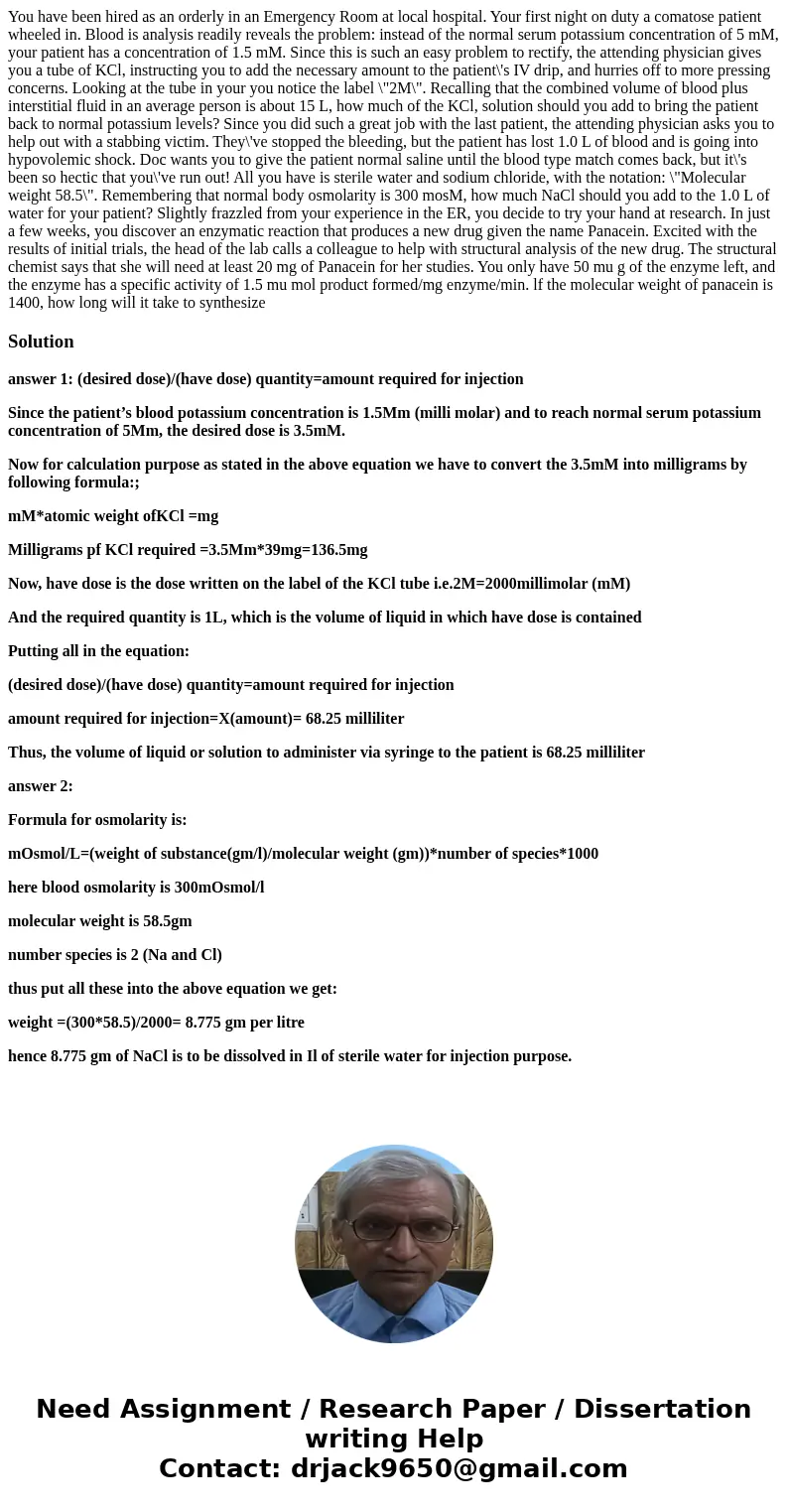You have been hired as an orderly in an Emergency Room at local hospital. Your first night on duty a comatose patient wheeled in. Blood is analysis readily reveals the problem: instead of the normal serum potassium concentration of 5 mM, your patient has a concentration of 1.5 mM. Since this is such an easy problem to rectify, the attending physician gives you a tube of KCl, instructing you to add the necessary amount to the patient\'s IV drip, and hurries off to more pressing concerns. Looking at the tube in your you notice the label \"2M\". Recalling that the combined volume of blood plus interstitial fluid in an average person is about 15 L, how much of the KCl, solution should you add to bring the patient back to normal potassium levels? Since you did such a great job with the last patient, the attending physician asks you to help out with a stabbing victim. They\'ve stopped the bleeding, but the patient has lost 1.0 L of blood and is going into hypovolemic shock. Doc wants you to give the patient normal saline until the blood type match comes back, but it\'s been so hectic that you\'ve run out! All you have is sterile water and sodium chloride, with the notation: \"Molecular weight 58.5\". Remembering that normal body osmolarity is 300 mosM, how much NaCl should you add to the 1.0 L of water for your patient? Slightly frazzled from your experience in the ER, you decide to try your hand at research. In just a few weeks, you discover an enzymatic reaction that produces a new drug given the name Panacein. Excited with the results of initial trials, the head of the lab calls a colleague to help with structural analysis of the new drug. The structural chemist says that she will need at least 20 mg of Panacein for her studies. You only have 50 mu g of the enzyme left, and the enzyme has a specific activity of 1.5 mu mol product formed/mg enzyme/min. lf the molecular weight of panacein is 1400, how long will it take to synthesize
answer 1: (desired dose)/(have dose) quantity=amount required for injection
Since the patient’s blood potassium concentration is 1.5Mm (milli molar) and to reach normal serum potassium concentration of 5Mm, the desired dose is 3.5mM.
Now for calculation purpose as stated in the above equation we have to convert the 3.5mM into milligrams by following formula:;
mM*atomic weight ofKCl =mg
Milligrams pf KCl required =3.5Mm*39mg=136.5mg
Now, have dose is the dose written on the label of the KCl tube i.e.2M=2000millimolar (mM)
And the required quantity is 1L, which is the volume of liquid in which have dose is contained
Putting all in the equation:
(desired dose)/(have dose) quantity=amount required for injection
amount required for injection=X(amount)= 68.25 milliliter
Thus, the volume of liquid or solution to administer via syringe to the patient is 68.25 milliliter
answer 2:
Formula for osmolarity is:
mOsmol/L=(weight of substance(gm/l)/molecular weight (gm))*number of species*1000
here blood osmolarity is 300mOsmol/l
molecular weight is 58.5gm
number species is 2 (Na and Cl)
thus put all these into the above equation we get:
weight =(300*58.5)/2000= 8.775 gm per litre
hence 8.775 gm of NaCl is to be dissolved in Il of sterile water for injection purpose.

 Homework Sourse
Homework Sourse